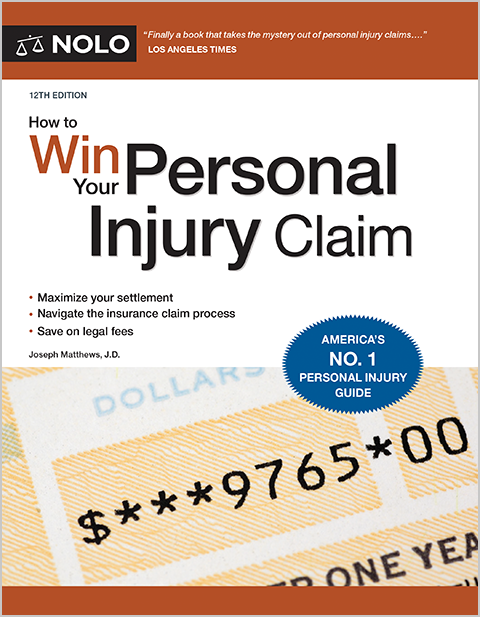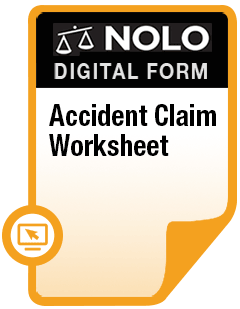If you’ve been injured on a trampoline, you might be able to sue the trampoline manufacturer, the trampoline owner, or a fellow trampoline user.
Bouncing up and down on a trampoline can be a fun way for kids to get some exercise and improve their balance and coordination. But trampoline use can also lead to serious injuries, and even death in rare cases.
The U.S. Consumer Product Safety Commission (CPSC) estimates that over 100,000 emergency room visits were trampoline-related in 2014. And from 2000 to 2009, the CPSC is aware of 22 deaths associated with trampoline use. The American Academy of Pediatrics discourages home use of trampolines, but jumping on trampolines continues to be a popular activity for kids.
What happens when someone gets hurt on a trampoline? Who, if anyone, is on the legal hook for the injured person's medical bills, pain and suffering, and other losses? Depending on how the injury happened, an injured trampoline user may have a personal injury claim against one or more of the following:
- the trampoline manufacturer
- the owner of the trampoline, or
- an individual who played a role in the accident like a fellow jumper or an adult who should've been supervising.
- Most Common Trampoline Injuries
- Who Is Responsible for the Injury?
- Types of Personal Injury Claims Involving Trampolines
- Does Homeowners' Insurance Cover Trampoline Injuries?
- Assumption of the Risk Defense
- How Much Is a Trampoline Injury Case Worth?
- Do Most Trampoline Injury Cases Settle?
- Do I Need to Hire a Lawyer?
- Talk to a Lawyer
Most Common Trampoline Injuries
People can get hurt while jumping on trampolines in many different ways. Most often, two or more jumpers collide or a jumper might fall or land improperly while doing a stunt.
Common types of trampoline injuries include:
- soft tissue injuries (sprains, strains, bruises)
- bone fractures
- lacerations, and
- head and neck injuries.
More injuries happen on backyard trampolines than at trampoline parks (66% versus 34%), but trampoline park injuries tend to be more serious.
Who Is Responsible for the Injury?
When someone gets hurt, the first thing most people want to know is, "Who was at fault?" When it comes to trampoline injuries, the answer to that all-important question often depends on two things:
- a consideration of everyone who could be responsible for the injury, and
- a look at the way the injury occurred.
Possible Responsible Parties
A lot of trampoline accidents are the trampoline user's fault, but others are the responsibility of:
- the trampoline manufacturer
- the trampoline owner, or
- another trampoline user.
Figuring out who's to blame for the accident is important because if you file an injury-related claim or lawsuit against the wrong party, you could end up with nothing.
For example, if a child suffers a concussion after a trampoline leg breaks, you might assume the injury is the manufacturer's fault. But if the trampoline leg broke because of years of accumulated rust, and not because it was built with low-quality steel, you would get nothing if you only sued the manufacturer and not the owner who failed to properly take care of the equipment.
So, What Happened Exactly?
It's crucial to understand exactly how the injury happened. Most trampoline accidents fit into one of three scenarios:
- something was wrong with the trampoline when it left the manufacturer
- the trampoline owner did not properly maintain it or adequately supervise its use, or
- the people using the trampoline did not use it responsibly.
Types of Personal Injury Claims Involving Trampolines
Once you figure out what happened and who is to blame, figuring out the type of claim you have becomes much easier. Here are the possibilities:
- if the manufacturer caused the injury, you sue the manufacturer in a product liability case
- if the trampoline owner caused the problem, you file a premises liability lawsuit, or
- if someone else is responsible for the injury, such as another user, you file a negligence claim against that person.
When to File a Product Liability Claim Against the Manufacturer
Manufacturers must design, manufacture, and distribute safe products. If a trampoline manufacturer fails to make a trampoline that is safe for its intended use, you can file a product liability claim. For example, if a trampoline claims to support a 200-pound person, the bolts should not give way when an average-sized child jumps on the trampoline.
When to File a Premises Liability Claim Against the Owner
A property owner or tenant is responsible for keeping visitors reasonably safe from harm, including trampoline users. In most situations, trampoline owners must take reasonable steps to:
- properly maintain the trampoline
- properly supervise its use, and
- shield an attractive nuisance.
Proper Maintenance. Trampoline owners must make sure the trampoline is in good condition. Like everything else, trampolines deteriorate over time—especially when left outside in the elements—and an owner who lets people jump on an old, rickety trampoline might be responsible for injuries. Trampolines also shouldn't be located in an unsafe area, like on concrete patios or near low-hanging power lines.
Proper Supervision. Owners must properly supervise people using the trampoline, especially those who may not understand the risks, such as young children and teens. People often get hurt on trampolines when they attempt dangerous tricks or jump with too many people on the trampoline at the same time. Proper supervision can help prevent trampoline injuries.
Attractive Nuisance. Children are naturally attracted to things such as pools and trampolines, and an owner is responsible for making sure that children cannot freely access these "attractive nuisances." Keeping the trampoline within a fenced area or storing the access ladder away from the trampoline can help limit both injuries and potential liability.
When to File a Negligence Claim Against Another Participant
Everyone has a duty to act reasonably under a given set of circumstances, including while jumping on a trampoline. Jumpers who unexpectedly launch fellow jumpers in the air causing them to land improperly may be liable for injuries caused by their negligent (careless) behavior.
Does Homeowners' Insurance Cover Trampoline Injuries?
Whether homeowner's insurance covers a trampoline depends on the specific language of the policy. Chances are the terms fall into one of these categories:
- the policy provides coverage without requiring the homeowner to meet any additional conditions
- the policy only extends coverage if the homeowner complies with certain requirements, such as installing safety equipment, or
- the policy excludes trampolines altogether.
If it's like most policies, your homeowner's coverage likely excludes trampolines, bounce houses, and similar play structures, and your insurance carrier has the right to cancel your policy if it discovers you have this kind of play structure in use on your property. This kind of discovery can happen after a property inspection, or when your vindictive neighbor, tired of hearing joyous peals of laughter coming from your yard, reports you. In either case, getting a new policy can be hard, so it's a good idea to understand the insurance picture before you install a trampoline out back.
It's Hard to Get Trampoline Liability Insurance
An injured person can rack up bills fast—and if you're the one that caused the injury, you're probably going to be the one footing those bills. That's what makes homeowners' liability insurance so crucial. It covers things like medical bills, lost wages, and even pain and suffering when someone gets hurt. If the injury leads to a personal injury lawsuit, not only does your liability insurance provide you with a lawyer, it will also pay any settlement or judgment.
Since trampoline accidents are common and have the potential to not only drain your assets, but force you into bankruptcy as well, protecting yourself with liability insurance makes sense. But that doesn't make coverage easy to get. Insurance companies aren't keen to provide insurance coverage for incidents related to trampolines because, simply put, these kinds of accidents cost insurance companies too much money.
There are two typical ways you can expect insurance companies to handle trampolines:
No trampolines allowed. Many insurance companies "exclude" trampolines from their policies. This means if you go ahead and get one anyway, the insurance company will not pay for any injuries connected with use of the trampoline.
Trampolines allowed as long as you follow safety requirements. Some insurance companies will cover your trampoline, and resulting injuries, as long as you abide by the safety precautions required by the policy. This might include sinking the trampoline so that the jumping surface is at ground level, or installing safety nets and pads around the perimeter.
Assumption of the Risk Defense
Certain activities—such as skydiving, football, and skiing—are inherently dangerous under the law. People who choose to participate in these activities should know that they could get hurt, and if they get hurt, they may not be able to hold anyone else liable for their injuries.
This defense to a personal injury lawsuit, called the "assumption of risk defense," may work against an adult injured on a trampoline, but it's less likely to work against a child.
How Much Is a Trampoline Injury Case Worth?
As with all injury-related legal claims, the value of a particular trampoline injury case depends on many factors, including:
- the seriousness of the injuries involved
- the injured person's prognosis for a full recovery
- the type of medical treatment required (past and future) for the injury
- the financial impact of the injury (like medical expenses and lost income), and
- the physical and mental pain and suffering caused by the injury.
Learn more about personal injury damages and compensation.
Do Most Trampoline Injury Cases Settle?
Most personal injury cases are dismissed or resolved well before trial. The plaintiff (the person suing) and the defendant (the person or entity being sued) are often motivated to settle a trampoline injury claim or lawsuit to:
- avoid the uncertainty of a trial
- save money on costs and attorneys' fees
- avoid additional stress, and
- protect their privacy.
Learn more about how settlement negotiations work in an injury case and what to do when settlement talks fail.
Do I Need to Hire a Lawyer?
You might be able to handle your own trampoline injury case if your injuries were minor and you've fully recovered. For example, if a homeowner negligently allowed you to jump on an old trampoline with a rusty metal frame and you cut yourself while jumping, you might be able to file a homeowners' insurance claim to cover the cost of your stitches and tetanus shot and go to small claims court if necessary.
But if you suffered serious injuries that require ongoing medical care and limit your ability to work, go to school, and enjoy your life, you need the help of a personal injury lawyer.
You likely also need the help of a lawyer if you're planning to sue the trampoline manufacturer. An attorney can help you figure out how to prove your product liability case.
Lawyers who file product liability and personal injury lawsuits typically handle cases on a "contingency fee" basis, which means you almost certainly won't have to pay lawyers' fees up front. In a contingency fee arrangement, you pay your lawyer a percentage (often one-third) of your compensation if you win your case. If you lose, you don't have to pay your lawyer a fee. (But beware: Win or lose, you'll probably be on the hook for costs and expenses like court filing and expert witness fees.)
Talk to a Lawyer
If you or your child has been injured on a trampoline, talk to a lawyer. A lawyer can answer your questions and help you sort out who might be legally responsible for the injury. A trampoline injury case can go in many different directions. A lawyer can help you get the best possible outcome in your case. Learn more about working with a personal injury lawyer.
- Most Common Trampoline Injuries
- Who Is Responsible for the Injury?
- Types of Personal Injury Claims Involving Trampolines
- Does Homeowners' Insurance Cover Trampoline Injuries?
- Assumption of the Risk Defense
- How Much Is a Trampoline Injury Case Worth?
- Do Most Trampoline Injury Cases Settle?
- Do I Need to Hire a Lawyer?
- Talk to a Lawyer


